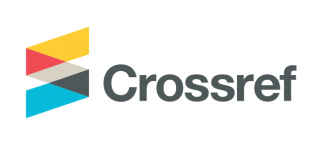ACCUMULATION OF HEAVY METALS WITHIN HARD CORAL Porites lutea IN SPERMONDE ARCHIPELAGO, SOUTH SULAWESI
DOI:
https://doi.org/10.20956/jiks.v4i1.3803Keywords:
accumulation, heavy metals, pollution, skeleton Porites luteaAbstract
Hard coral Porites lutea is an animal that lives on the ocean floor. This species may live for years and accumulate heavy metals from its surrounding environments. The aims of this study was to know accumulation of heavy metals (Pb, Cd, and Cu) pollution by Porites lutea at different islands in Spermonde Archipelago waters. This study used field surveys around Laelae, Bonebatang and Badi Islands of South Sulawesi. Field parameters measured were oceanographic parameters, metals in water and sediment. Hard coral was extracted using nitric acid, then measured its heavy metal levels using Atomic Absorption Spectrophotometer. Several field parameters such as temperature, salinity, turbidity, pH and dissolved oxygen indicated no differences at each location, whereas the difference was observed in the values of Total Suspended Solid and dissolved oxygen. The results showed the accumulation of heavy metals in the skeleton of Porites lutea was Pb>Cu>Cd and Laelae>Bonebatang>Badi Island.
References
Anu G, Kumar NC, Jayalakshmi KJ, Nair SM.(2007). Monitoring of heavy metal partitioning in reef corals of Lakshadweep Archipelago, Indian Ocean. Environ Monit Assess 128:195–208.
Arnot,J.A and F. Gobas. (2006). A review of bioconcentration factor (BCF) and bioaccumulation factor (BAF) assessments for organic chemicals in aquatic organisms. Environ. Rev. 14: 257–297 (2006).
Cebrian, E. R. Martí, J. M. Uriz and X. Turon.(2003). Sublethal effects of contamination on the Mediterranean sponge Crambe crambe: metal accumulation and biological responses. Marine Pollution Bulletin. 46(10):1273-1284.
Dar MA, Abdel-Wahab M.(2005). Particulate sediments and trace metal uptakes in some recent corals, Red Sea coast, Egypt. Bull Fac Sci Zagazig Uni Chem Geol 27:115–135.
Dar MA, Mohammed TAA. (2006). Bio-mineralization processes and heavy metal incorporations in the scleractinian coral skeletons, Red Sea, Egypt. Egypt J Aquat Res 32(special issue): 87–104.
Denton, G.R.W., and Burdon-Jones, C. (1986). Trace Metals in Corals from The Greath Barrier Reef, Marine Pollution Bulletin, 17, 209-213.
IADC/CEDA. (1997). Convention, Codes, and Conditions: Marine Disposal. Environmental Aspects of Dredging 2a. 71 hal.
Madkour HA, Dar M.(2007). The anthropogenic effects of the human activities on the Red Sea coast at Hurghada harbour (case study). Egypt J Aquat Res 33(1):43–58.
Mallongi, A. (2014). Environmental Risks of Mercury Contamination in Losari Coastal Area of Makassar City, Indonesia. International Journal of Scientific and Research Publications. 4:1-6.
Mitchelmore CL, Alan-Verde E, Ringwood AH, Weis VM. (2003). Differential accumulation of heavy metals in the sea anemone Anthopleuraelegantissima as a function of symbiotic state. Aquat Toxicol 64:317–329.
Morrison, R.J., Narayan, S.P., and Gangaiya, P. (2001). Trace element studies in Laucala Bay, Suva, Fiji, Marine Pollution Bulletin, 42, 397-404.
Muhammed, T.A.A. and M.A. Dar. (2010). Ability of corals to accumulate heavy metals, Northern Red Sea, Egypt. Environ Earth Sci 59:1525–1534.
Shah, S.B. (2008). Study of Heavy Metal Accumulation in Scleractinian Corals of Viti Levu, Fiji Islands. Thesis. University of the South Pacific Suva, Fiji Islands.
Werorilangi,S., M. F. Samawi, Rastina , A. Tahir, A. Faizal and A. Massinai.(2016). Bioavailability of Pb and Cu in Sediments of Vegetated Seagrass, Enhalus acoroides, from Spermonde Islands, Makassar, South Sulawesi, Indonesia. Research Journal of Environmental Toxicology, 10: 126-134.
Van Hansen, I. (1995). Accumulation of copper, zinc, cadmium and chromium by the marine spongeHalichondria panicea Pallas and the implications for biomonitoring . Marine Pollution Bulletin. 31(1-3):133-138.
Downloads
Published
Issue
Section
License
Copyright (c) 2018 Jurnal Ilmu Kelautan SPERMONDE

This work is licensed under a Creative Commons Attribution-NonCommercial 4.0 International License.

This work is licensed under a Creative Commons Attribution 4.0 International License













